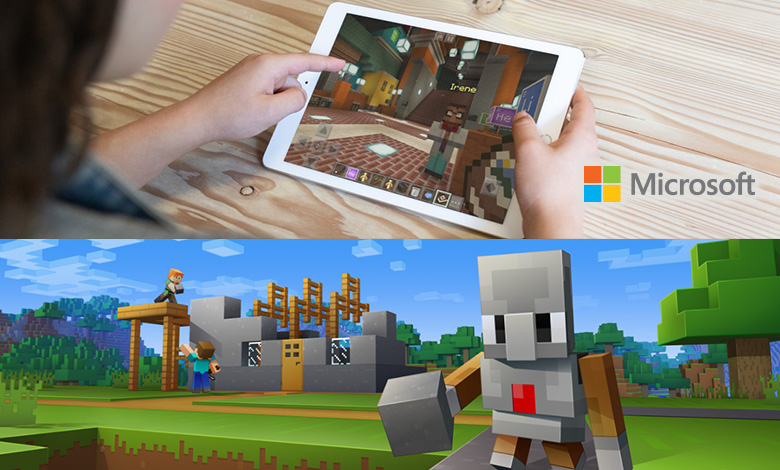A few years ago, HP held a customer event at Connection. The audience was made up of teachers and IT staff from area schools. I was scheduled to speak on Minecraft: Education Edition, which I presented the same way a teacher might: by letting the students drive the experience—with guidance. I set up a new education-designed laptop with Windows 10 and downloaded Minecraft: Education Edition. I asked the audience who had played Minecraft, and then selected someone with no previous experience. Sharing the laptop’s screen with the group, I placed the teacher into Minecraft’s Tutorial World. Within minutes, some audience members started playing on their own devices—and, with that, the class was off to the races. Walking around the room, I saw teachers figuring out how use the spacebar to jump over obstacles, or holding down the left mouse button to turn trees into wooden blocks for crafting. Once through the tutorial, the teachers started brainstorming on how to incorporate their existing lesson plans into a digital world.
In the last few years, game-based learning through Minecraft—or other means—has been pushing education as an industry towards an increasingly digital future. In one survey, 74% of grade K–8 teachers reported using some sort of digital games for instruction, but only 8% reported receiving formal training on digital game integration. Microsoft has made large investments in the past three years in an effort to improve those statistics. Pedagogy is resistant to change by nature, but—at the same time—embraces creativity quickly. As new teachers enter the schools, they are bringing new ideas and tech with them. In 2019, technology has caught up to ideas that teachers are bringing into their classrooms. They can now set up online worlds and embed the standards and lessons within the game worlds.
Related: TechSperience Podcast Episode 3 – Are Your Classrooms Ready for Game-Based Learning?
I highly recommend that schools use Minecraft: Education Edition for adopting game-based learning. Microsoft and the Minecraft team have created hundreds of ready-to-implement lesson plans that are complete with pre-built game worlds, listed learning outcomes, and pre-made handouts. Educators from around the world participate in Minecraft’s online education community by sharing and collaborating on lesson plans. One of my favorite lesson plans is a science lesson on the human eye. In a traditional lesson, students may read about the layers and functions of the eye or watch videos. With Minecraft: Education Edition, students can hop on their Windows 10 laptops and walk around inside of a gigantic model of a human eye. The model has text and links on signs that explain each layer and function. Students are also able to walk along the blocks of light to understand how and where light enters the eye. Taking 20 students and having them fly into an eye ball is engaging and immersive.
Game-based learning combines technology in the classroom with the lessons and standards that need to be taught. Above that, Minecraft: Education Edition and other Windows 10 technologies create a new environment in which students can collaborate, create, and innovate. Creativity, critical thinking, collaboration, and communication are considered 21st century skills that are needed for the future job markets—and it’s estimated that 85% of jobs that will exist in 2030 haven’t been invented yet.
This puts an immense pressure on the education system to prepare students with the right mix of 21st century and STEM skills to handle whatever comes their way in the future. A substantial technical skills gap in today’s job market exists and is only growing. Minecraft: Education Edition focuses lesson content on STEM subjects—such as math, science, and visual arts. A recent national survey by the Games and Learning Publishing Council found that 98% of teachers cite problem solving as the top skill students learn from Minecraft.
When I speak to customers looking to purchase devices for their students, I’ll ask how they are going to be used in the classroom. I often hear standardized testing as the answer—but wouldn’t you want to do more with this great technology? Why not maximize your investment with devices that support game-based learning tools like Minecraft: Education Edition?
If 21st century skills are a priority at your school, or you want to create a proof of concept to try out some new learning techniques, then definitely consider contacting Connection. We can help you discover the latest in classroom-ready Windows 10 devices, learn more about Minecraft: Education Edition, and find STEM products for any school type and size.
If you’d like to learn more about game-based learning in schools and Minecraft: Education Edition, listen to our podcast on this quickly-developing subject today.


